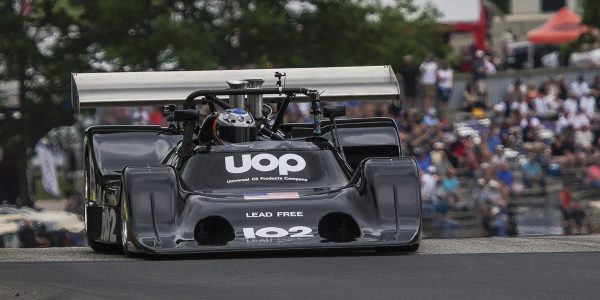
From the very beginning of automobile racing you can find cars that can be considered iconic. If you are discussing the topic with race fans, there are bound to be widely differing opinions on just which cars can be called icons. That’s the way with most racing subjects.
I consider an iconic car to be one that had such an impact, that it forever changed the sport or the series in which it competed. An iconic car is not necessarily an overpowering or dominant car. Most had some degree of success, and a certain number of wins. However their very appearance on track, and the design technologies used were enough to send other designers and builders running back to their drawing tables.
Certain series seem to breed more of these type of than others. LeMans prototype classes by their very nature exist for this purpose. Race cars built from the ground up to be new and innovative employing all the automotive knowledge currently available. Formula 1 has a long list of innovative cars as well. But if I were asked to come up with the next most innovative series, it would without a doubt be Can-AM.
Can-AM was very much a prototype series. With very few rules or design restrictions it, attracted some of the best and brightest designers of our times. Names like Jim Hall, Bruce McLaren, and Don Nichols. These people brought us such memorable cars as Chaparral, McLaren, and Shadow. As a kid growing up reading about this series, I was fascinated by the uniqueness of the Chaparrals, in love with the design of the McLaren’s, and absolutely blown away by the UOP Shadow.
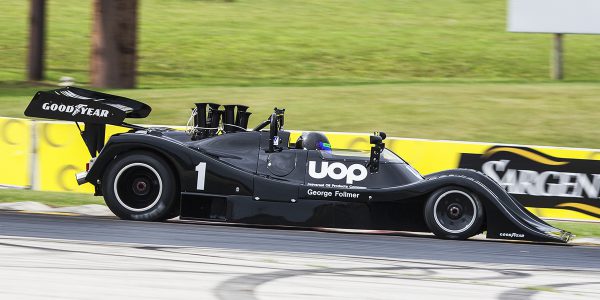
UOP (Universal Oil Products) had been in the oil and oil refining business since 1914. By the early 70s, UOP had developed a technique for removing lead from automotive fuel. As is the case with most drastic technology changes, oil producers were resistant to the process. Some believed the unleaded fuel would be somehow inferior, and not give the same performance as conventional leaded fuels. It was during this time period that Don Nichols had developed a car for the Canadian American Challenge (Can-AM) series.
When UOP brought Don Nichols on board at the inception of its Can-AM program, he brought with him his experience building cars for his own company Advance Vehicle Systems. Cars built there and for the Shadow program were among the most innovative and technically advanced of the time. Drawing on components made by the various divisions of UOP, they used the latest in metals, alloys, and other materials produced by the company. They were given the name SHADOW for the 30s-40s radio and magazine crime fighter of the same name. The cars were painted black with white lettering for the sponsor, and the words Lead Free, and Unleaded fuel on them.
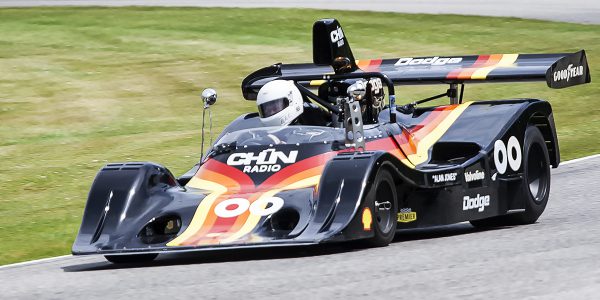
As is often the case with most prototypes, the promise they showed in speed and maneuverability in testing was defeated by other problems. This caused many DNFs and early withdrawals from events. Between 1971 and 1973 Shadow continued to develop new cars which proved to be just as problematic. It wasn’t until 1974 with the introduction of DN4 that things began to turn around. The DN4 was the culmination of all the hard work, and disappointments of previous years. It would turn out to be the pinnacle of UOP’s racing success as none of their cars in Can-AM or other series would come close to matching its achievements.
Driven by two of their regular drivers, Jackie Oliver, and George Follmer, the DN4 was a truly dominant car often finishing 1 & 2. From its introduction the design caused controversy, with its smaller wheels, and a lower profile. By the time the DN4 was released, these features had been perfected. This produced one of the most stunningly beautiful race cars to ever take to the track. It also became the only true threat to the McLaren, Lola dominance of the Can-AM series.
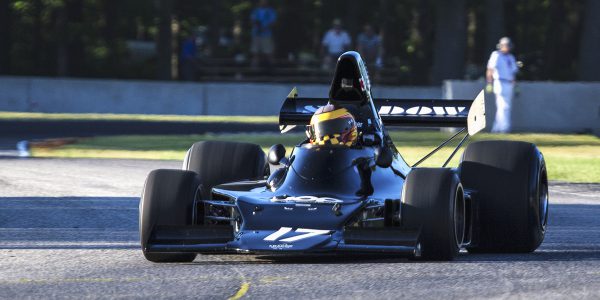
By the time the DN4 started to dominate Can-AM, UOP had already expanded into other series. The most notable of these being their entry into Formula 1 in 1973, and later Formula 5000. Once again they would call upon their stalwart driving team of Jackie Oliver and George Follmer. In 1974 they hired Peter Revson, and Jean-Pierre Jarier as drivers for the Formula 1 program. They had also hired Tony Southgate to design cars for both series. Despite some outstanding driving by Jarier the team only managed to finish the season with Jarier in 13th place overall. Tom Pryce who was added to the team during the season finished in 18th place.
The Shadow Formula 1 program continued into the late 70s, but never quite achieved the success of the Can-AM program. In 1974 the DN4 ran away with the Can-AM championship. Had it not been for the cancellation of the 1975 season, it might well have done it again. 1975 saw Shadow’s entry into the very popular Formula 5000 series run by SCCA & USAC. The DN6 car used for the series was a very close copy of their current Formula 1 car. While the front end was for the most part identical, the rear part of the chassis had to be modified to accommodate their biggest surprise. The use of a Dodge V8 instead of the Chevy small block everyone else was using. Overall results were mixed as they only managed one win at Road America, and Jackie Oliver came in third place in the driver’s championship.
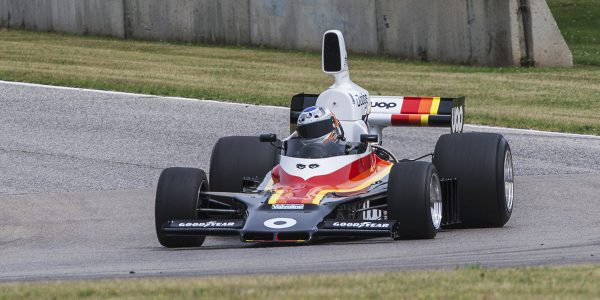
Later years saw a decline in the car company’s fortunes in their last remaining series, Formula 1. This led to many key personal leaving for other teams, or to start their own ventures. All race car builders have up and down years. It’s part of the price of innovation, not everything works the first or second time. Some survive the experience to go on for decades, others do not. Only a rare few leave behind a legacy that years after their demise, still excites people the way they did when they were new. Most people do not remember the failures, or average performance of other Shadow built cars. However they all remember the success of the Shadow DN4
The feeling of awe and reverence I get when I see these cars on track, and at speed is difficult to put into words. I can only be thankful to the dedicated people who own and maintain these incredible machines, and bring them out for the rest of us to the enjoy.
